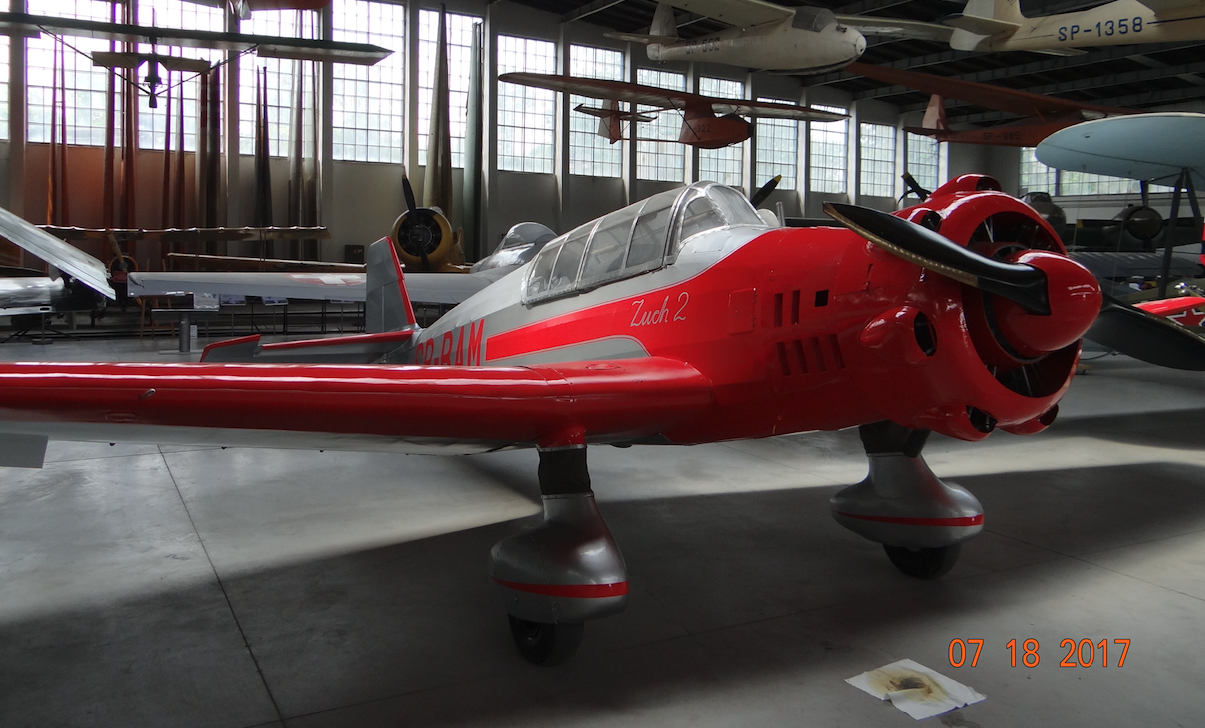Kraków 2015-04-01
Polish Aviation Industry – Part 12
Design and Studies Office
Experimental Aviation Workshops
Establishment of the team of the Design and Studies Office – BPiS in Lublin. 1944
A new reality has come. After the German occupation, came the Soviet occupation. The structures of the new state were being built with the blessing of the Kremlin. The first offices of the People’s Republic of Poland and the first ministries were organized. At the same time ruthlessly combating the pre-war legal order. Some people had their eyes open, but it was too late. It was possible to adopt a fighting stance until the end and end your life in the secret police office or carve out a piece of free Poland in the new reality. At that time, a ministry called the Department of Communication, Post and Telegraph was established. In turn, the Department of Civil Aviation was established next to it. It was an announcement of some development of civil aviation in post-war Poland.
In October 1944, engineer Aleksander Sułkowski reported to the Civil Aviation Department. (Later, engineer Aleksander Sułkowski became its manager). He presented to Bolesław Bierut the necessity to quickly develop a liaison and availability aircraft for the needs of the new government. At the same time, he showed that the Po-2 used at that time was slow and uncomfortable. The engineer, having obtained personal support from Bolesław Bierut, obtained permission to establish an aviation design office in Lublin. The office was called Biuro Projektów i Studiów – BPiS. Importantly, the then minister of Communications, Post and Telegraphs – Jan Grubecki (state and people’s activist, road and bridge construction engineer) was an opponent of the establishment of this office.
Employees for BPiS were sought, among others, through advertisements in the press. In this way, we managed to gather a group of 36 people; engineers and technicians, some with unique aviation specialties. It is worth quoting their names; Eng. Tadeusz Sołtyk, eng. Jerzy Rzewuski, eng. Stanisław Kuczewski, eng. Stefan Stankiewicz-Suchowski, eng. Jan Madejczyk, eng. Wiktor Leja (representative of the Civil Aviation Department), Witold Sołtyk, Stanisław Karwowski, Bazyli Krawczenko, Jan Przyłucki, Romuald Flach, Zbigniew Niwiński, Antoni Grabowski, Jan Flakiewicz, Zbigniew Grudziński, Antoni Szymański, Jan Czwórnóg, Władysław Zielniewicz. Mr. Władysław Zielniewicz played an important role in the team. Perfect organizer and supplier. He was the one to get the materials and raw materials for the team, and it was extremely difficult. There is a known case with a slide rule, which was purchased by Ing. Tadeusz Sołtyk for a monthly salary. Mr. Władysław Zielniewicz appeared in Lublin with a set of tools (which he hid from mosquitoes) and nine young people, Home Army soldiers, whom he taught aviation mechanics. Ing. Wiktor Leja organized DC-3 Dakota flights to the lands recovered for szaber. In this way, the team obtained a lot of raw materials, materials and tools. The team had to find a place for themselves. It turned out to be very difficult. Initially, the team took up several rooms in the former post office building in Lublin on Chopin Street. But they were forced to look for another place. They had to settle for premises on the third floor of the brewery at Grabowska Street. The premises needed to be renovated. Bring electricity and organize basic furniture and stationery. They even drew their first drawings on wrapping paper.
Just as the life of the team members was simple and looked like kicking a horse, the plane was supposed to be just as simple. The machine was supposed to be a liaison machine, taking 4 or 2 people and a lot of luggage on board. The plane was named Szpak, referring to Polish pre-war designs. The name is assigned to Eng. Jan Madejczyk.
The only thing the team wouldn’t have any problems with was the powertrain. The 125hp M-11 engine was to be the same one used in the Po-2. As life has shown, it was not that simple and the concept had to change.
The plane received a rectangular wing and a NACA 23012 profile. And the reason was simple. In post-German papers it was the only profile suitable for this type of aircraft. The team did not have any Polish pre-war documentary materials. The profile turned out to be accurate, because Tadeusz Sołtyk used it many times in his subsequent constructions, including in Junaki and TS-8 Bies.
The first fragments of the wing structure began to form. Difficulties were building up. Policymakers decided that building an airplane in this way was impossible. They wanted the team to take on other tasks; e.g. engine repairs. Here, Eng. Tadeusz Sołtyk. Fortunately, the government departments were changing like a kaleidoscope. On December 31, 1944. a separate ministry of communication was established, and Jan Rabanowski became its minister. He, in turn, was responsible for the Civil Aviation Department, headed by Eng. Jan Madejczak.
Thus, Biuro Projektów i Studiów – BpiS was the first post-war aerospace structure facility in Poland in the new reality. Although it has not built any aircraft in Lublin.
Written by Karol Placha Hetman

